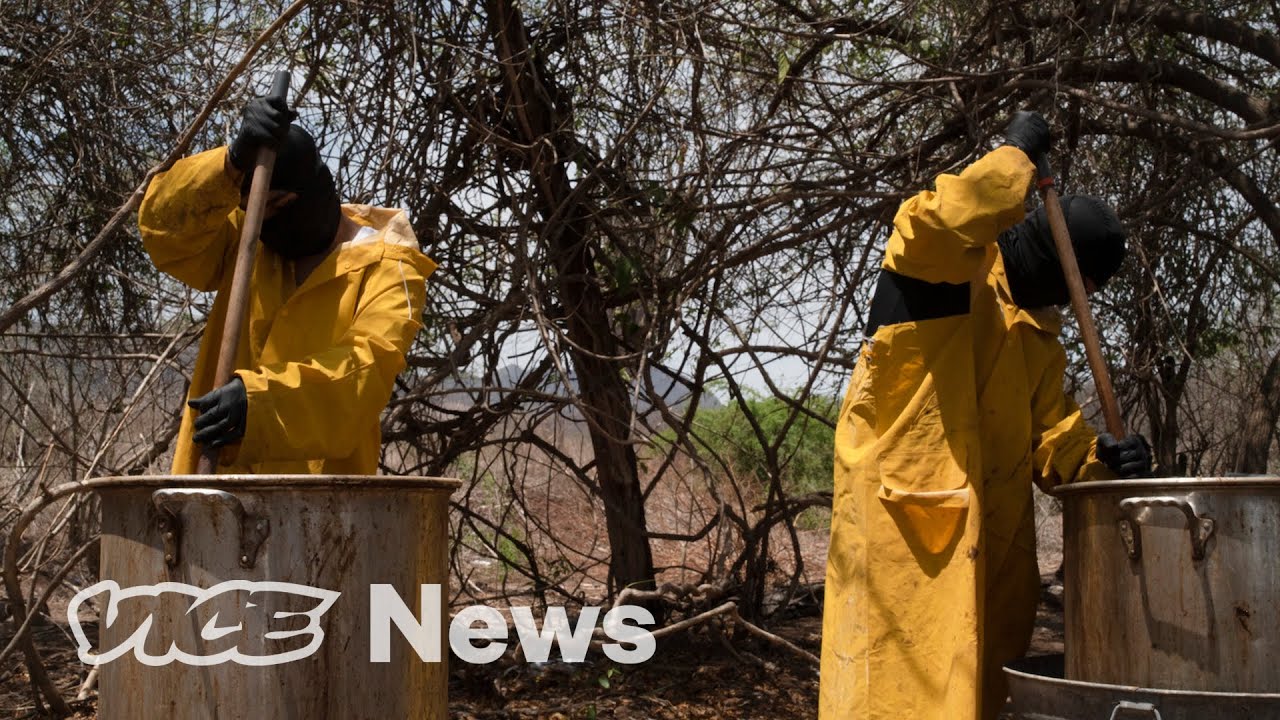Inside the Sinaloa Cartel’s Fentanyl Smuggling Operations

VICE News gained access to a Sinaloa Cartel fentanyl-trafficking operation for a few days last year, during the production of our new podcast series called “Painkiller: America’s Fentanyl Crisis.”
We watched masked cartel members hauling bundles of precursor chemicals out of the ocean, interviewed local bosses, and followed the process of cooking fentanyl into heroin, a combination of drugs that has fueled a surge in overdose deaths across the U.S.
What advantages does fentanyl smuggling have for drug cartels compared to other drugs?
The Sinaloa Cartel, one of the most notorious drug trafficking organizations in the world, has expanded its criminal empire to include fentanyl smuggling operations. Fentanyl, a synthetic opioid that is 50 to 100 times more potent than morphine, has become a lucrative business for the cartel due to its high potency and low production costs. However, the Sinaloa Cartel’s fentanyl smuggling operations are also at the forefront of the opioid epidemic that has ravaged North America.
According to the United States Drug Enforcement Administration, the Sinaloa Cartel is responsible for importing at least 80% of the fentanyl that enters the United States. The cartel sources fentanyl from China, where it is illicitly produced in large quantities, and smuggles it across the border into the United States, often hidden in shipping containers, vehicles or even sewn into the lining of clothing. Once the fentanyl reaches its destination, it is distributed to street-level drug dealers who mix it with other substances such as heroin, cocaine or methamphetamine. The resulting drug cocktail, known as a “speedball” or “speedballing,” is highly addictive and can be lethal in small doses.
The Sinaloa Cartel’s fentanyl operation has many advantages over other drug trafficking enterprises. First and foremost, fentanyl is relatively easy and cheap to produce compared to other drugs like cocaine or heroin. This allows the cartels to reap massive profits with relatively low overhead. Secondly, fentanyl is small and lightweight, making it easy to transport and conceal. The drug is also very potent, meaning that traffickers can smuggle a large amount in a small space.
However, the illicit nature of fentanyl production and consumption means that the drug has serious public health consequences. The opioid epidemic has claimed thousands of lives in the United States alone, with fentanyl being responsible for many of these deaths. The drug is so potent that even a small amount can cause an overdose, and users often have no way to know whether their drugs have been cut with fentanyl. In addition, because fentanyl is so easy to smuggle, it is difficult for law enforcement and border control officials to intercept it before it reaches the streets.
Despite the challenges presented by fentanyl smuggling, the United States and Canada have implemented measures to stem the flow of the drug across their borders. These include increased border security, educational campaigns aimed at reducing opioid use, and initiatives to expand access to addiction treatment. Furthermore, law enforcement agencies around the world are working together to disrupt the Sinaloa Cartel’s drug smuggling operations.
In conclusion, the Sinaloa Cartel’s fentanyl smuggling operations pose a serious threat to public health and safety. The cartel’s ability to produce and smuggle the drug at low cost and high potency has created a lucrative market for a deadly substance. However, by working together to increase awareness, border security, and treatment options, we can work to mitigate the impact of fentanyl on our communities. The fight against fentanyl may not be over, but with concerted effort, we can begin to turn the tide against this deadly drug.










Inside Liv Tyler’s Gut-Renovated NYC Brownstone
How does luxury car lease hacking work?
Lemurs get high
10 FASHION TRENDS FOR 2019 // Fashion Mumblr
Climate change – living on the water